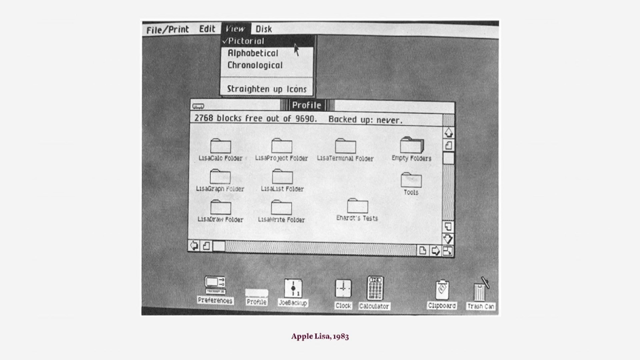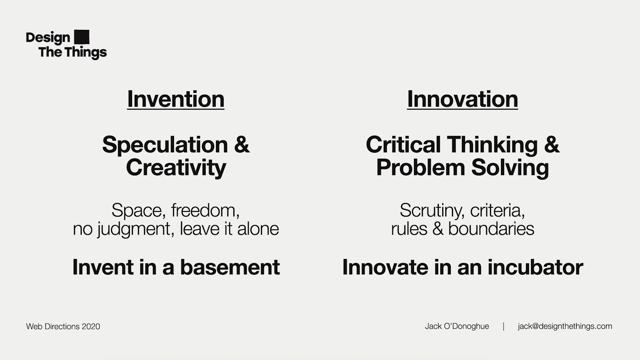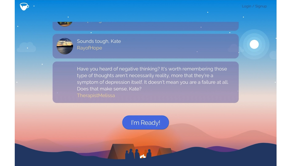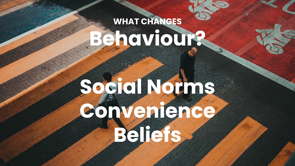Design Patterns for building Trust

(hiphop music) - Hi, thanks for joining me today to hear my talk, designing for trust.
I thought I'd begin with a little bit about myself. So, I'm a digital designer, and I work for a company called ThoughtWorks. And because I design digital products, I often get asked by my clients how I can make those products appear more trustworthy. And I think that over the last couple of years in financial services, consumer trust has really become a dwindling commodity. And I'm really interested in what went wrong, and why, and how we as designers can make things right for customers and design a better experience, because I really do believe that the banks do want to do the right thing by customers. And to illustrate this point, I took a whole bunch of vision statements from Australian banks and I fit them into a word cloud and you can see the results here, and you can see that they all talk about customers. In fact, you can see, customers, is the biggest word here in the centre.
And most banks would actually describe themselves as you know, their purpose is to serve their customers. However, check out this, Ipsos trust survey from last year. You can see here, that bankers scrape in at 13% for trust by Australian consumers, and that's just a percentage point above politicians. So, it appears that Australians don't trust the banks. However, it didn't use to be like this.
Perhaps the single thing that shone a light on the state of financial services in Australia was the Royal Commission, the Banking Royal Commission of 2017.
And it seemed that every day during the Royal Commission, we would open up the papers to read absolutely gobsmacking headlines about the greedy banks. Check out this headline in the middle here, charging fees to dead people.
So, in 2018, the Hanes report came out, you can see here it's light red.
And it was absolutely packed with recommendations, which the government actually took a lot of these into account and to introduce greater regulation to the banks. But despite these interventions, consumer trust is still really at an all time low. And part of the reason for this is that in parallel to the Royal Commission, there's also been an escalating anxiety around personal data, driven by the constant data breaches because customer data has become just so valuable and so vulnerable to being stolen.
In the last decade, it's become its own asset class, and it powers businesses like Google, Amazon, Facebook. It's really key to their business models.
And most of us know someone or have been a victim ourselves of identity theft or credit card fraud.
Here are just some of the biggest data breaches in the last year alone, and these are just the big ones that start at a hundred million personal files. So, businesses are now really forced to consider what customer data they should be collecting and how they can protect it from these types of breaches. Ethical use of customer data is no longer an occasional concern, but it's actually a key driver of consumer trust. So, the Australian government introduced the Consumer Data Right in Australia, and it aims to make it really easy for Australians to take control of their own personal data, and by doing that, it enables them to move their business more easily between banks and financial service providers. How the Australian business can do a lot more than this to really maintain trust with customers, and by doing that to remain competitive in the market. So, today, I'm gonna be sharing a few simple design principles that can help build trust between consumers and their service providers. So, these are the five principles.
So, it starts with transparent communications. And this is all about talking to your customers in their own language.
Secondly, is understanding your customer and only selling them the things that you know are relevant to them, that they can use.
The third is to slow down.
Make sure that your customer really understands the product before they agree to buy.
The fourth is to normalise, no.
Make it easy for your customers to opt out or to turn back. And the fifth is to give customers control over their data and over their privacy.
So, let's start with the first principle, which is transparent communications.
Now, Nielsen Norman Group, famously said that when in writing for the web, you should aim for the literacy level of an eighth grader. So, that's 13 to 14 year old.
And the reason for that is because 30% of your audience online has that level of literacy, of an eighth grader.
And for those with higher literacy, well, they don't even like to read.
They're just skimming.
So, in thinking about addressing an eighth grade audience, you're actually improving the understanding and few content for everybody. So, how do you know if your content can be understood by a 13 year old? Well, I don't know.
I don't have teenagers, but I do know this, kids that age have moved on from Harry Potter, they read that in primary school, now, they're reading The Hunger Games, and I've heard The Hunger Games, it's actually quite a sophisticated book.
But how do you make your product content and your terms and conditions, and product disclosure information as interesting and relevant to read as The Hunger Games? Well, it turns out it's not just about using plain language that an eighth grader can understand.
It's also important to make that information relevant to your audience.
So, thinking about, you know, complex terms and conditions, and try to make that understandable to an eighth grader, to get started, really, you need to look at the products themselves. If your product needs a 20 page set of terms and conditions to be understood, then maybe you need to simplify the product. And to do that, you really need to bring in your lawyers early on to look at the product and think about how you can simplify terms and conditions, product disclosure statements, so that they can be understood by your customers, To do this, you really need to bring them on early in the product design part of the cycle.
With financial concepts, you also have the added complexity of the industry jargon.
I've worked with a whole number of banks and financial institutions over the last couple of years to create customer experience guidelines, particularly around the world of payments.
And they all agreed that if we could establish consistent language to describe payments consent, the sort of, concepts around authorization, that it would actually improve learnability of the products for the customers, and it would make it easier for customers to compare products and make an informed choice. So, an example of what that simple language can look like. We tested various options for creditor and data, which is language that all the banks use, and we found that the terms that people really understood and were least confusing was payer and payee. And it's important in thinking about using that plain language that you need to use across all of your channels. So, it's not just around the product information itself, we need to use simpler language at the customer contact centre, our customer facing staff in banks.
Now, transparency and consistency in the language you use with your customers also extends to communicating with them really regularly, and in a timely way.
When we did research with customers, we discovered that there was a really common pain point that they had with the financial service providers, and that was unexpected fees on their accounts. Customers hate getting fees that they weren't expecting. And we found that a way that banks can really improve the situation for customers is just by sending preemptive texts to them, automated texts about activity that's going on in their accounts so that they're informed in advance and within the timeframe that they can act. And this really goes a long way to establishing trust and giving customers a sense of greater control over their own money.
So, the next principle that I want to talk to you about today is around understanding your customers.
Now, I'd like you to think about the special relationship that you have with your favourite service provider. And for me, that's Yummy, he's my barista.
Now, whenever I walk into my local cafe, he knows exactly how I like my coffee.
He knows that I bring my own KeepCup, that was pre the pandemic, and he knows exactly how I like my coffee, he really cares about my coffee experience. He knows that I have a long black and I like it really weak. And he's nice about that, he doesn't give me grief about my weight coffee. But you know, in thinking about that relationship and how loyal I am to him, how do you scale that to an enterprise? You know, that's a difficult thing to think about. How do you scale those personal relationships? But imagine if you could.
Imagine if you were able to treat every customer like a customer segment of one.
What are the banks, could actually deliver the type of personalised and highly tailored services that we've grown to expect from companies like Amazon, or Google, or Facebook? What if they could treat their customers like individuals? What if they were concerned with not only pushing the next best product, but really providing advice and guidance that takes into account all aspects of the customer's life? Well, they can actually do this just by using the rich data that we grant them access to.
And this means moving away from selling generic bundled products that is designed to suit the business more than they are, the customer.
Bundled products are designed for really broad segments, and they offer a smorgasbord, which for someone like me, a vegan, I rarely find something I can eat on the smorgasbord.
And during the Royal Commission, we thought just how bad some of these bundle products could be, with scandals such as selling income protection to retirees. Rather, we can actually use the rich data that we have on customer's spending habits and their histories to provide extremely relevant and tailored products. It is possible to offer product bundles to customers as long as they're relevant and as long they can present relevant options to choose from.
So, the third principle is slowing down, and this is probably one of the most counter-intuitive principles for seasoned UX designers. But so long, we've measured the success of the customer experience around the speed to complete a task.
Fast and the patient experiences are not only good measures of customer satisfaction, but they're also good for business.
At the heart of consumer data right is the notion of informed consent.
Your customers need to be fully informed about how their data is gonna be used before they should give consent.
And similarly, customers that are considering purchasing a product or entering into payment terms with you, they really need to understand the terms and conditions before they make a decision.
And that means that you need to encourage your customers to slow down.
Then, they need to be presented with clear explanations and given the time to read.
We call this positive friction.
Positive friction introduces small interactions that force the user to slow down.
For example, we can progressively disclose chunks of information into small digestible things. At ThoughtWorks, we used it for the design of consent and authorization flows, and it gives the customer the ability to read chunk down terms, and to acknowledge that they have read each page. So, they're really forced to slow down and process the information.
The fourth principle that I'd like to talk about is normalising, no.
Now, years of marketing and user experience design have reinforced the majesty of the call to action. When we design customer journeys, we typically only design for the happy path that culminates in the glorious moment when the customer hits the, pay now, button. Typically, the designer will craft that journey to make it as fast, seamless, and efficient as possible. But in situations where we're really asking a lot from the customer, like committing to a complex payment agreement or turning over all of those social contexts on the social media site, we should really present the options in a more equal light. There are always at least two paths that the customer can choose, and often, it's a sane option for them to decide not to follow that happy path.
So, instead of making the cancel link small compared to, pay now, button, why not make them both look the same size? For the customer, this represents decision point. So, don't try and fool them into thinking that there's a right answer and a wrong answer.
Here's an example of using a payment authorization journey, and it culminates in two buttons, and we've presented them with equal emphasis. And this reinforces the importance of the decision for the customer, and it helps to normalise that option to cancel or to say, no.
So, the last principle that I'd like to talk about is giving customers control.
As data security and privacy become significant concerns for customers, they're starting to wise up, and their attitudes towards their own personal data, is starting to change.
They expecting complete ownership over their data, their health data, their financial data, even their social media data.
Giving customers a sense of control over their data will help to build trust.
And the consumer data right in Australia will go a long way towards helping to achieve this. However, there's really no reason that businesses need to wait for the heavy hand of regulation in order to change their service agreements with customers. When GDPR came in in Europe, for example, a lot of companies looked at it and just knew that it was the right thing to do for their customers, globally, ThoughtWorks included. We changed the way we do business in all regions. So, these are just some of the questions that businesses need to answer if they're gonna get serious about protecting their customers and their customer data. Firstly, look at the way you're storing it. Have you encrypted it? Can it be breached? And are we only capturing the data that we actually need to provide a better service for our customers? Are we asking our customers for consent before we capture that data? And are we telling customers how their data is gonna be used? Are we allowing them to access and manage their own data? As a general rule, we need to be way more frugal with the data that we're collecting from customers. After all, if that data does get breached, how much greater damage can you do if you're collecting unnecessary data about your customers? And you can see here, this 2018 research by Ponemon Institute, surveying customers that were victims of the data breach, and 31% of them left their service provider. So, ask yourself, can you really afford to lose over 30% of your customers because of the data breach? So, in summary, the five principles again.
Firstly, transparent communications, which is all about talking in your customer's language. Secondly, understand your customer, know what they need, and don't tell them what they don't need.
The third is to slow down.
Make sure that they really have the time to understand the product that you're selling to them. The fourth is to normalise, no.
Make it easy for them to opt out or to turn back. And lastly, give customers control over their data and over their privacy.
For me, personally, I've had to relearn much of my training in usability and digital marketing.
Having worked for 20 years in digital, I've always measured the success of the digital experience in terms of speed to complete a task, customer conversions, minimising bounce rates, and shopping cart abandonment. Whilst all of these are valid measures, if you focus upon them exclusively, then it's gonna be hard for you to build trust with your customers.
Consumer trust is an asset that businesses really need to thrive.
And trust is very much a two way transaction because to earn the trust of your customers, you also need to trust them by giving them agency and control over their data and the ability to say no, thank you.
(bright music)















